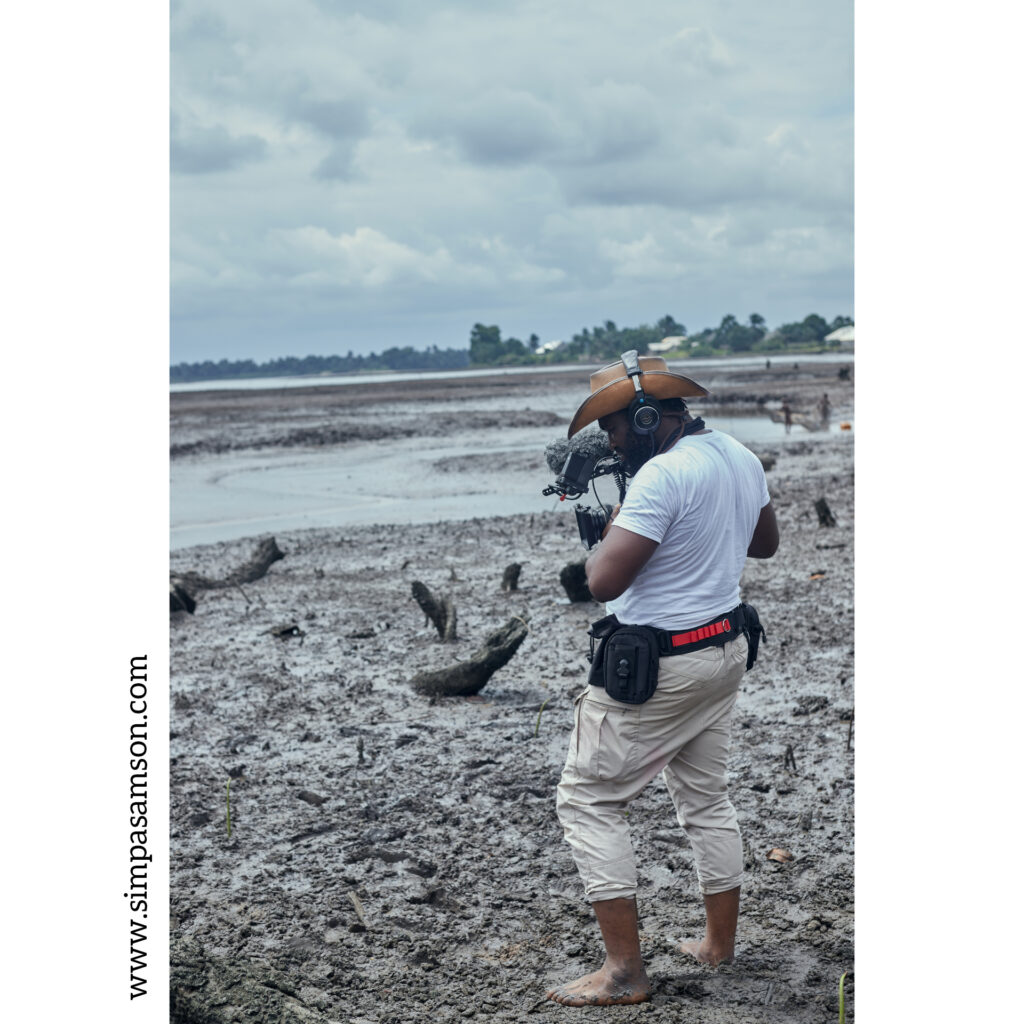Simpa Samson is an Emmy Nominated, Cannes World & Morton Frank Award winning DP/Director. His work focuses on international development, health, and human rights, and He has DP Documentary for International Network such as: Bloomberg Original, Vice News, Aljazeera, CNN, Russia Today, Skoll Foundation, Morgan Stanley, Waterbear, RedfishMedia, Deutsche Welle (DW), and International Aid Organisation such as United Nation, Save The Children UK, UNOcha, World Health Organisation, World Food Program, UNICEF Geneva, INTERSOS, F.A.O, among others. Simpa Samson, was known for filming in hostile environments at the beginning of his careers there by making him have vast experience as a War Cameraman. He Operates around Africa and has a wide range of connections with fixers around Africa.
In 2023, Black Snow: Nigeria Oil Catastrophe, a documentary that Simpa DP/Directed for Bloomberg Quick take in the Niger Delta region of Nigeria, got an Emmy Nomination, and also won him and the team a Morton Frank Award organised by Oversea Press Club of America.
Learn More about Simpa Samson in our Storyteller of the Month Spotlight Q&A below.
Africa is for us, and we know our culture, land and way of living better than any other person, so it’s really important that we tell a very good story with authenticity and message for the world at large to be able to see and relate.
Simpa Samson
Documentary FILMMAKER


All my conservation Documentaries stories are successful, from films such as: Martha’s Delta, The Black River, Black Snow: Nigeria oil Catastrophe, Bat Couple. And all of them have had a good impact, by making the local Community that we film in know the reason why they should protect nature.


We hope you enjoyed this piece.
If you will like to be featured as one of our Climate Storyteller’s of the month? Kindly use this link to indicate interest or share with friends who qualify: African Climate Stories – Storyteller of the Month.


